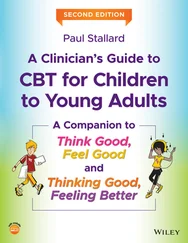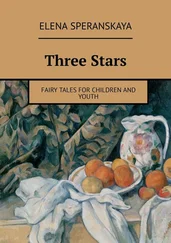Additional negative aspects to liquid medicines or syrups are that they often have sugar added to sweeten the taste and promote concordance in taking the medication (Baguley et al., 2012). If a medicine is to be taken long‐term or prescribed for a child with diabetes mellitus, a sugar‐free version should be considered if a tablet is not an option. This will also aid dental health, where taking sugary medicine regularly throughout the day can result in tooth decay. In Chapter 4drug formulations are discussed.
In cases where there is not an alternative or a baby or young child spits out the medicine or refuses to take it, having a drink of the child’s choice to take straight after the medicine will take away the taste quickly. If the medicine does not have to be given on an empty stomach, a favourite food or snack may also be an option. Putting the medicine into a drink or bottle of milk is discouraged due to the following risks.
If some of the drink is left, it is difficult to estimate how much of the medicine has been taken.
The medicine may react with the fluid.
If the medicine is denser, it will sink to the bottom of the container or adhere to the inside of the container.
If the drink takes a long time to drink, the medicine is not given at the same time.
The medicine may alter the taste of `the drink or milk and the child then refuse to drink it.
With babies, oral syringes are commonly used to drip liquid medicine into the buccal cavity or onto the tongue. Assessing the swallowing ability is important and awareness of tongue tie, or cleft lip and palate difficulties should be considered. Oral and nasal cavities are closely linked, and liquid medicine can come out of the nasal passages if the baby does not suck and swallow and is distressed or sneezes. Cradling babies, ensuring their arms are not flailing about, and talking to them provides comfort and reassurance.
It is important for babies to feel secure and loved by those around them and cuddling a baby when giving a liquid medicine can often help. Family‐centred care, where the family is treated as a unit, recognises the importance of the parent/carers in nurturing the child whilst in hospital.
In the first year, babies learn to roll over, sit, crawl, stand and walk. With these developing skills toddlers often want to be in control where they can, and allowing them to hold and press the syringe to control the medicine is often a positive approach for concordance.
As children develop and become more independent with everyday skills, they should understand what medicine they are taking is for and why it is important.
Safety is the priority, and as is highlighted on all medicine containers, medicine must be kept out of the reach of children both in hospital and the community. It is important to watch a child taking their medication to ensure that they have taken it. If medicine is left next to the child in hospital or community, it may be taken by another child, knocked over or forgotten.
In younger children they may not have the ability to swallow a tablet and even in older CYP the tablet may be so large they have difficulty swallowing. In tablets that are enteric‐coated it is important not to crush them so as to aid swallowing. Enteric coating is used for medicines that cause irritation to the upper gastrointestinal tract and the coating is broken down in the stomach by digestive acids, allowing the medication to be absorbed through the stomach and intestines. Crushing the tablet will increase the risk of gastric irritation. Where possible, liquid preparations should be prescribed. This is commonly seen in over the counter medicines that can be purchased in pharmacies or supermarkets, and an example of this is paracetamol, which is available in numerous formats.
In a local store or pharmacy find out the following information:
|
PARACETAMOL TABLETS |
SOLUBLE TABLETS |
MELTS |
CALPOL INFANT SYRUP |
CALPOL 6 PLUS |
PARACETAMOL SUPPOSITORY |
| What is the recommended age range? |
|
|
|
|
|
|
| What is the strength of the active ingredient? |
|
|
|
|
|
|
| What is the cost of medicine? |
|
|
|
|
|
|
| How many tablets or doses are in each container? |
|
|
|
|
|
|
| What additional company (trade) names can you find for each of them? |
|
|
|
|
|
|
Teenagers develop through a complex range of emotions, physical changes and exploring identity. Through the onset of puberty hormones such as testosterone and oestrogen are produced, resulting in growth spurts and the production of secondary sexual characteristics such as body odour, body and facial hair, breast development and menstruation. During this time there is an increase in self‐awareness and the need to be accepted by peers and society. There is an increase in mental health conditions developing in this age group, including eating disorders, anxiety, depression as well as lack of confidence. It has been noted that young people often rebel against strict boundaries and want to be treated and act like adults, leading to risk‐taking behaviours.
Coping with ill health and being separated from friends and peers can be very isolating, especially when in hospital for long periods with a complex or long‐term condition. Taking medication or carrying emergency medication, such as an epi pen in case of an allergic reaction, ventolin inhaler in case of an asthma attack or insulin and equipment to monitor and correct blood sugar levels in diabetes, can be rejected by some.
Young people should be involved in the decision‐making process about their treatment and share the responsibility where appropriate. Their independence should be supported and plans developed to encourage their self‐management as they move to adulthood and in the future leaving the family home. Encouraging independence supports normality in life and allows young people to stay at friends houses or go on residential trips with their peers. Promoting the self‐management of treatment and medication develops responsibility, time‐management and decision‐making skills. One area that can be difficult with this is supporting parents to allow their child to have some independence and responsibility for their own health. When medication is vital, not taking medication can be life‐threatening. This is very difficult for parents/carers, having maintained their child’s safety and health for many years.
Krishna aged 15 years has cystic fibrosis and has had 3 hospital admissions in the last 6 months for chest infections requiring antibiotics and increased physiotherapy. Krishna has regular medication including digestive enzyme tablets to take with food, salbutamol inhaler as a bronchodilator, dornase alfa to thin the secretions in his lungs and antibiotics for a chest infection. Due to the amount of regular medications taken at home Krishna brings his medications in to hospital to show the admitting nurse practitioner during the assessment so that the ongoing treatment can be maintained, and a review of the medication optimisation can occur effectively.
Whilst in hospital Krishna’s own medication can be used if he were able to self‐medicate and a lockable cupboard is at the side of his bed. This gives Krishna some independence and control over his treatment.
Читать дальше











